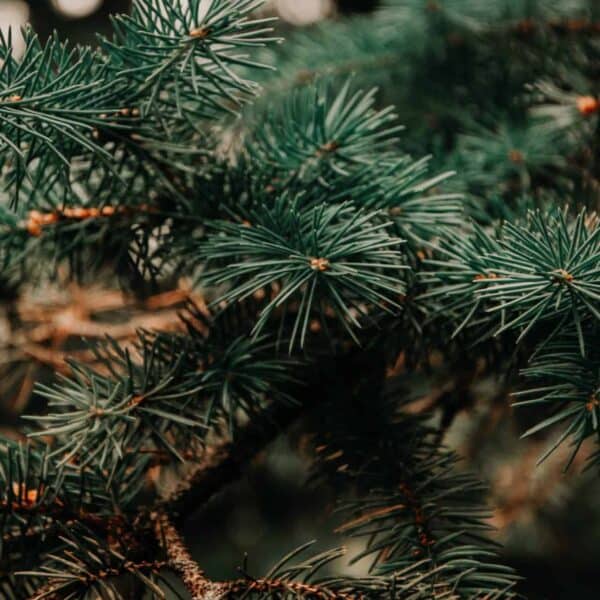
Tree Branches & Corneal Abrasions
December 13, 2019

This time of the year, many people are hanging festive decorations 
What is a corneal abrasion?
The front surface of the eye is a clear window, called the cornea, which helps provide vision. A corneal abrasion is a scratch to the cornea, and more specifically, the corneal epithelium (the outermost layer of the cornea that is affected in a typical, superficial abrasion). It does not take much to scratch the cornea; Even the tiniest of particles (sand, dirt, wood, metal) can feel like a rock inside the eye and has the potential to cause a corneal abrasion. The more obvious culprits are from a fingernail, mascara wand, paper, and plants. Imagine a papercut on your eye…it’s quite painful!
What are the signs and symptoms of a corneal abrasion?
The signs and symptoms vary based on the severity of injury. The following are the most common effects that may be noticed:
– Sharp pain
– Foreign body sensation (feels like something is on the surface of the eye)
– Burning
– Tearing
– Redness
– Blurred vision
– Photophobia (light sensitivity)
What is the treatment for a corneal abrasion?
Similarly to the range of symptoms, the treatment is based on the severity of the injury. Treatment can be as simple as preservative-free artificial tears for mild abrasions. The goal is to keep the eye well lubricated as it heals on its own. Mild abrasions heal very quickly within a couple of days. Other, more serious, abrasions require antibiotic drops to prevent infection from developing during the healing process. Sometimes an anti-inflammatory drop is also needed to minimize corneal scarring with deep wounds. Pupil-dilating eye drops can help with pain in severe cases.
Some corneal abrasions require frequent follow-up appointments to monitor the healing process. Just like a cut on any other part of the body, a corneal abrasion does increase the risk of infection to that area. If the cornea becomes infected, it can have serious visual consequences.
To minimize the risk of a corneal abrasion, always wear protective eyewear when working in dusty environments, using power tools, or “weed whacking.” If poked in the eye with accompanying pain, or if it feels like something is in your eye, please see an eye care professional to make sure the cornea has not been damaged.
Enjoy the holidays and protect your eyes!